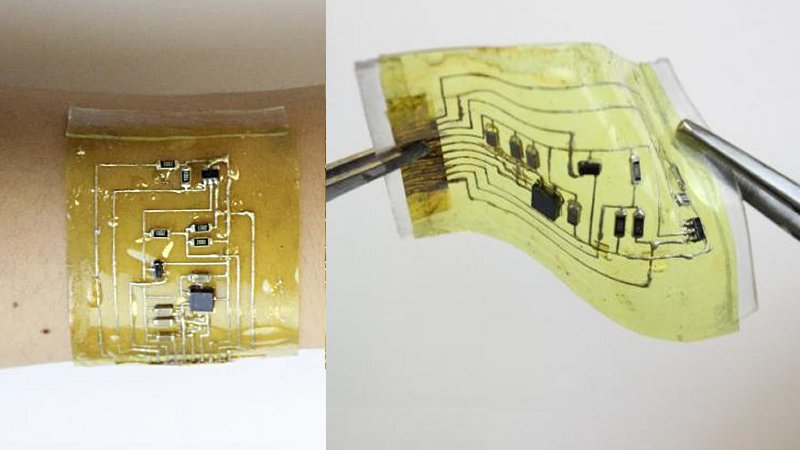Eddie Gonzales Jr. – MessageToEagle.com – This new “electronic skin” can heal itself as real skin does, and one day it will allow people to collect accurate data about their bodies.
Researchers – Jianliang Xiao and Wei Zhang – at the University of Colorado Boulder are developing a wearable electronic device that’s sticks onto, human skin.
The team, led by Jianliang Xiao and Wei Zhang, explain that his new “electronic skin” reliably performs a range of sensory tasks, from measuring the body temperature of users to tracking their daily step counts.
And it’s reconfigurable, meaning that the device can be shaped to fit anywhere on your body.
“If you want to wear this like a watch, you can put it around your wrist,” said Xiao, an associate professor in the Paul M. Rady Department of Mechanical Engineering at CU Boulder. “If you want to wear this like a necklace, you can put it on your neck.”
“Smart watches are functionally nice, but they’re always a big chunk of metal on a band,” said Zhang, a professor in the Department of Chemistry. “If we want a truly wearable device, ideally it will be a thin film that can comfortably fit onto your body.”
The researchers’ inspiration comes from a science fiction movie “Terminator”.
“Our research is kind of going in that direction, but we still have a long way to go,” Zhang said.
His team’s goals, however, are both robot and human. The researchers previously described their design for electronic skin in 2018. But their latest version of the technology makes a lot of improvements on the concept — for a start, it’s far more elastic, not to mention functional.
To manufacture their bouncy product, Xiao and his colleagues use screen printing to create a network of liquid metal wires. They then sandwich those circuits in between two thin films made out of a highly flexible and self-healing material called polyimine.
The resulting device is a little thicker than a Band-Aid and can be applied to skin with heat. It can also stretch by 60% in any direction without disrupting the electronics inside, the team reports.
“It’s really stretchy, which enables a lot of possibilities that weren’t an option before,” Xiao said.
If you slice a patch of electronic skin, Zhang said, all you have to do is pinch the broken areas together. Within a few minutes, the bonds that hold together the polyimine material will begin to reform. Within 13 minutes, the damage will be almost entirely undetectable.
By 2021, estimates suggest that humans will have produced over 55 million tons of discarded smart phones, laptops and other electronics.
Their “electronic skin” is much better!
Both the electronics and the stretchy material can then be reused.
“Our solution to electronic waste is to start with how we make the device, not from the end point, or when it’s already been thrown away,” Xiao said. “We want a device that is easy to recycle.”
Written by Eddie Gonzales Jr. – MessageToEagle.com Staff

